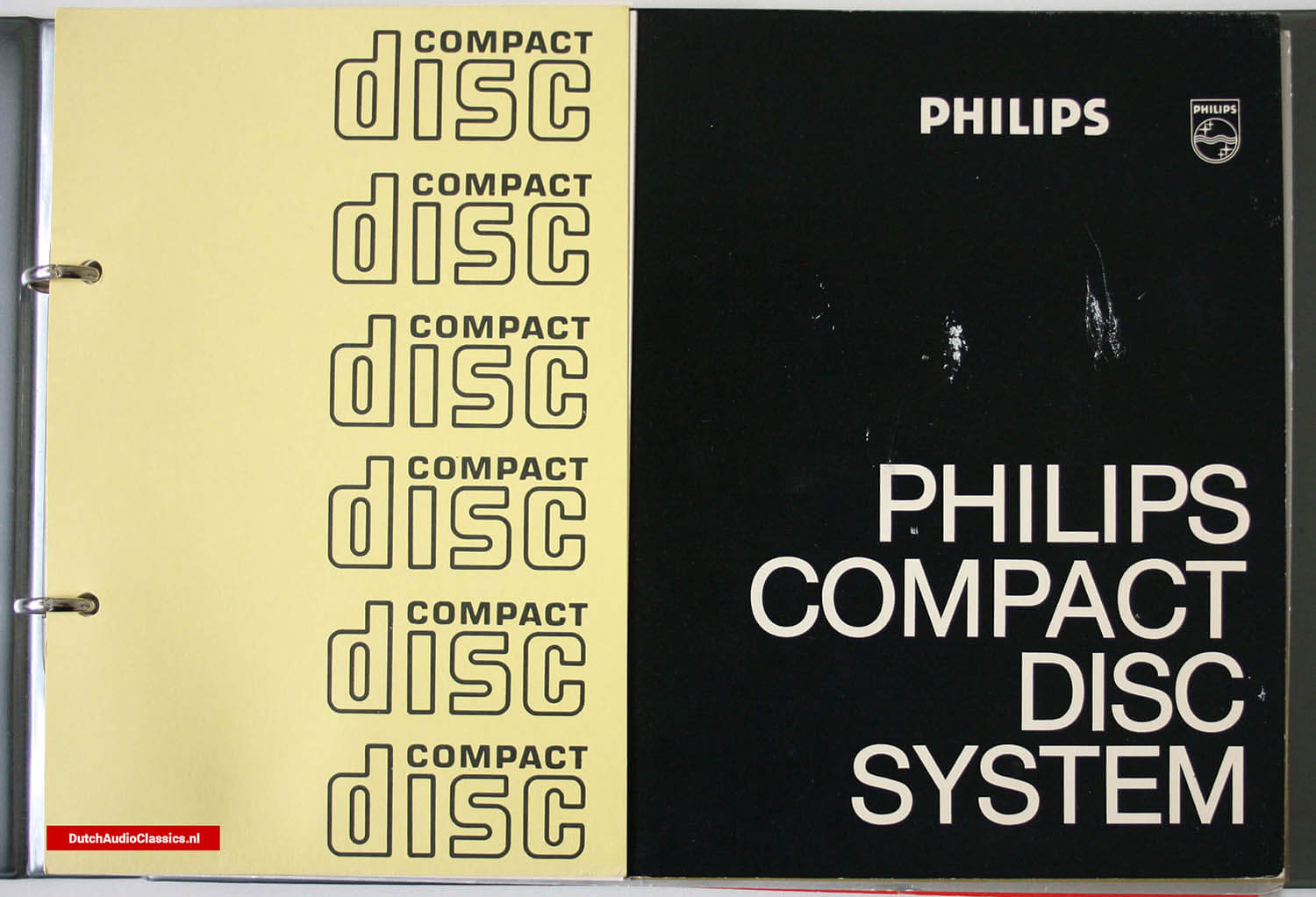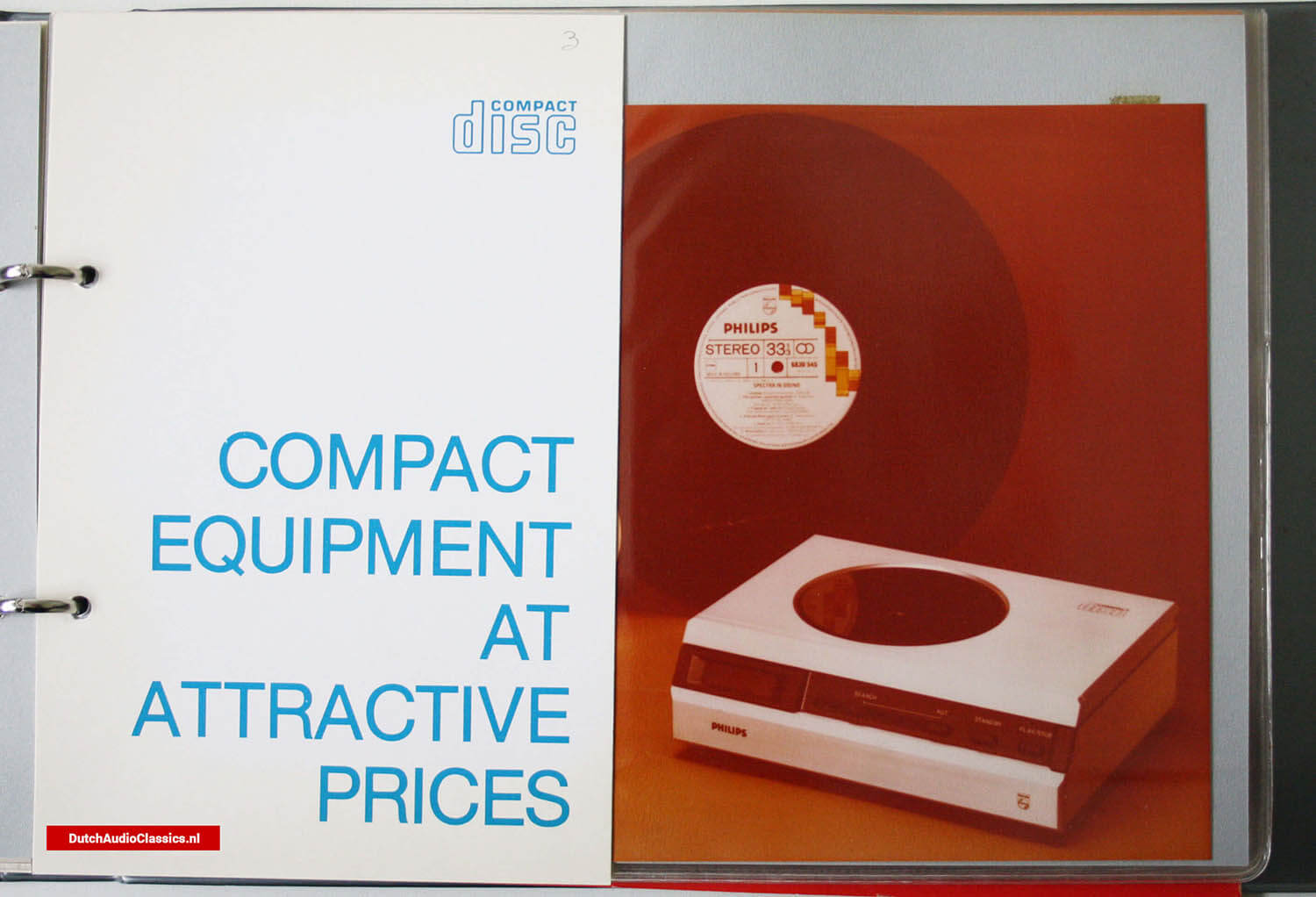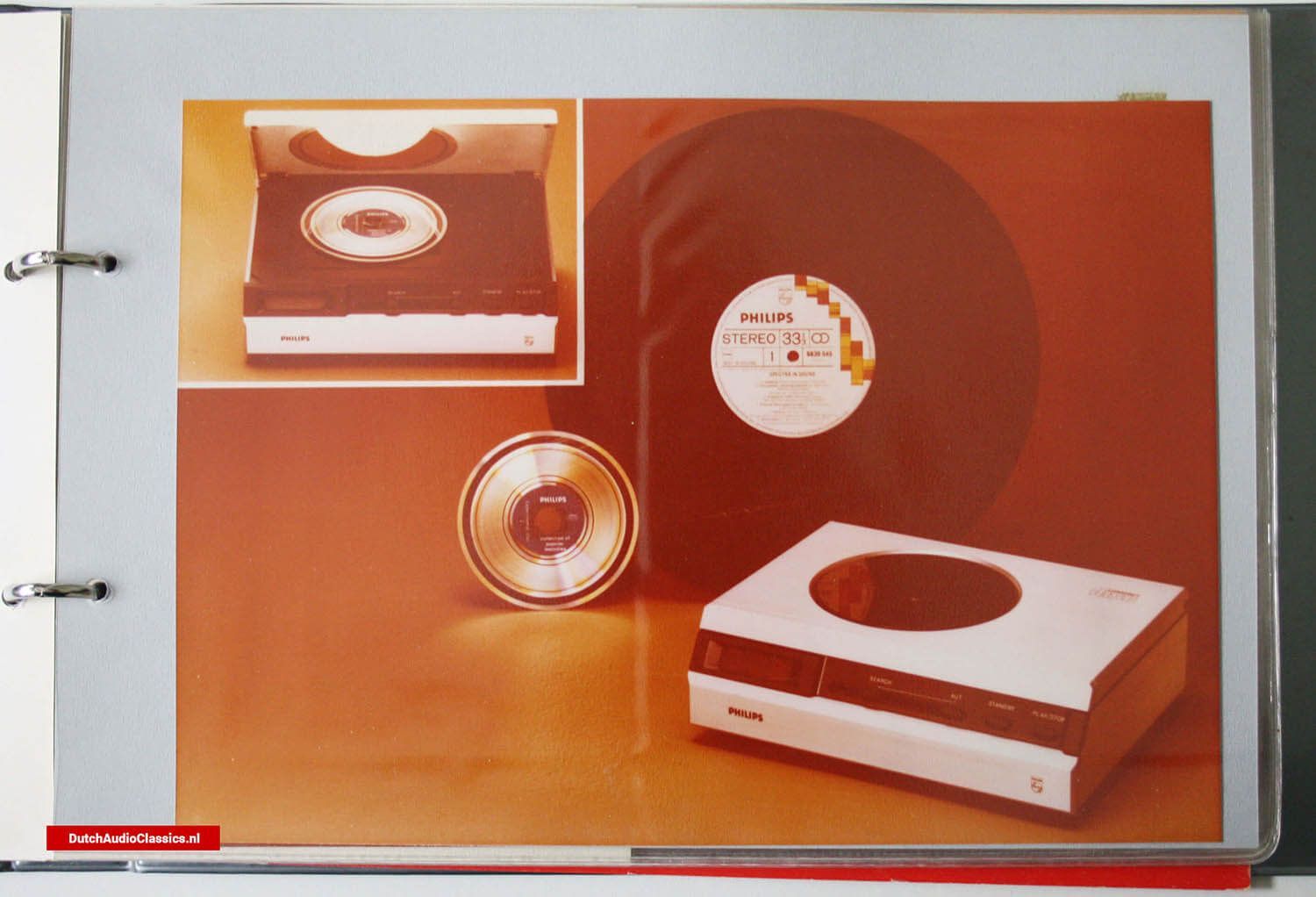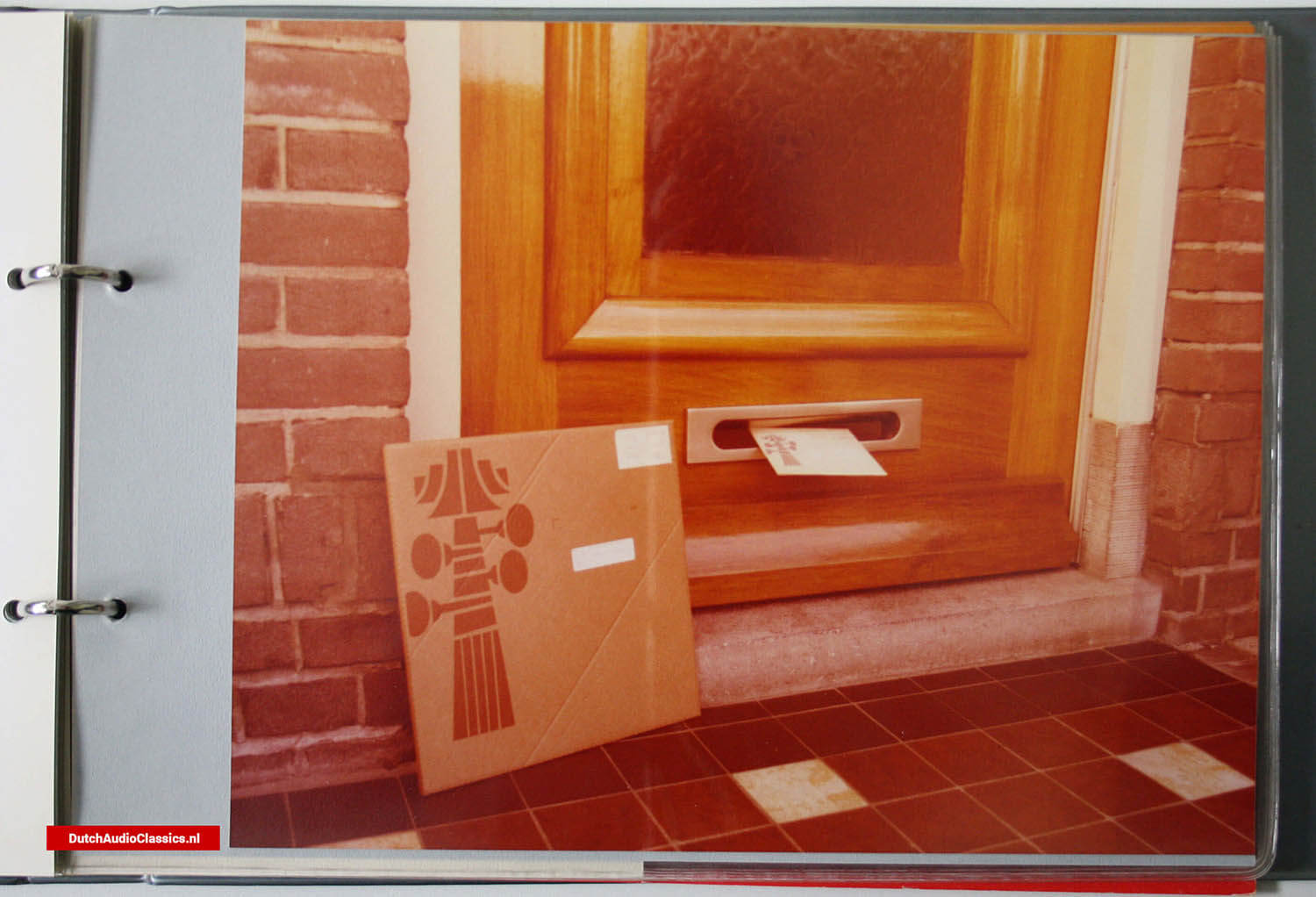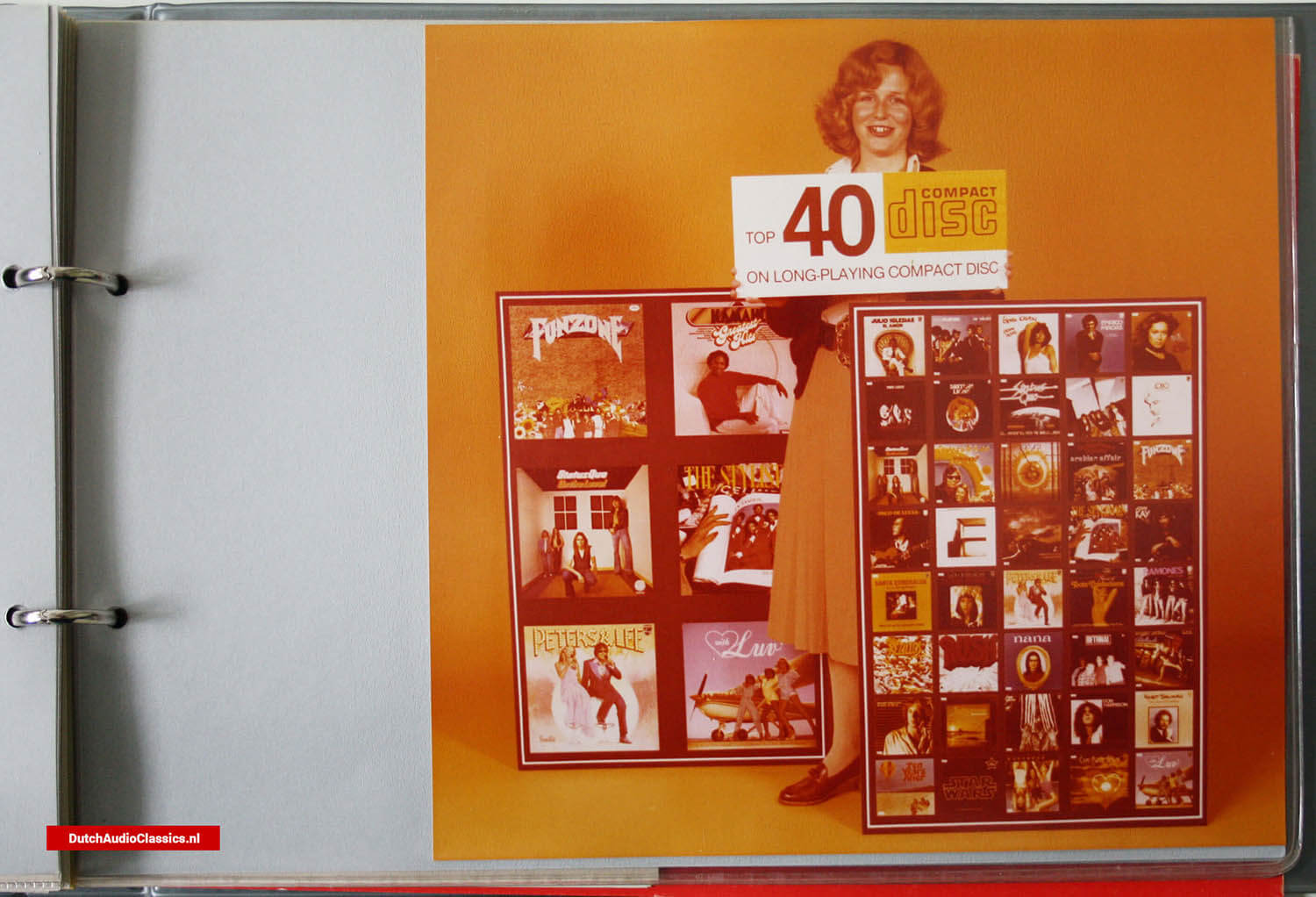The Philips Compact Disc System folder from January 1979 is a valuable piece of history that offers insight into the early days of compact disc technology. This folder, which was previously owned by Dieter Radecki, former Vice President of Polygram and Commercial Director of DCC, describes the numerous advantages of the compact disc in the fields of industry, trade, and consumer use. It was donated to the Philips DCC Museum by Radecki, along with his entire Philips DCC collection.
The folder, which was created a few months before the worldwide presentation of the Philips Compact Disc System by Joop Sinjou, appears to be an internal document that compares the advantages of the compact disc to the LP. However, the exact origin and purpose of the folder is not entirely clear.
At Dutchaudioclassics, we believe that preserving and sharing historical artifacts like this folder is important for understanding the development of the compact disc system. If you have any information about this folder, or any other pieces of digital audio history, we encourage you to contact us.
![Dieter Radecki Polygram Compact Disc]()
The folder looks like an internal document in which it describes all the advantages of the compact disc compared to the LP. However, the origin and purpose of this folder is not 100% certain.
If anyone knows this book and knows its origin and purpose, please let us know!
Enjoy the contents of this beautiful folder!
Philips compact disc system
The reason for the tremendous growth of the record
business over the last three decades can be
summarised in one word: innovation.
Innovation in the field of artists and repertoire, but
also, and most important, innovation in the technical
field.
From the 78 to the LP; from mono to stereo; the
introduction of the 8-track cartridge and the
musicassette have all greatly contributed to the
dramatic increase of the consumption of prerecorded
music over the past 30 years.
Improved quality and more efficiënt production
methods for the software; availability of a wide range
of playback equipment, from the Highest Fi down to
the lowest price bracket, have had their favourable
effect. The cartridge and the musicassette opened
additional fields in particular of music on the move.
The introduction of these new Systems and carriers,
as we now realise, has been of vital importance for
the record trade. Yet over these 30 years there have
been a great many more inventions, interesting ones
even, other kinds of cartridges, small-sized single
records, that have not caught on. The fact that for
each new system software has to be available in
broad variety, right from the beginning, when the
penetration of the hardware is still very low, poses
some considerable marketing problems, which have
not always proved surmountable.
For the record industry and for the record trade it is
only worthwhile to embark upon a new system, if,
because of its excellence, its special capabilities and
its economy, additional sales and greater efficiency
in manufacturing and distribution can be obtained to
such a degree that the burden of having to produce,
to stock and to handle an extra carrier for the wide ’
range of existing repertoire will be offset by the extra
profits to be expected.
The possible adoption of new Systems by record
trade and industry has to be judged with this point of
departure in mind.
The latest innovation effort: quadrophony, has, so far,
not caught on. This may be because, on second
thought, the consumer has on average only two ears,
which generally makes it hard for him to enjoy
fully and at leisure all possible virtues of
quadrophony. However, it is certain that the
dispersion of efforts in this field, leading to
complexity and diffuseness of the situation, as well
as to serious doubts at the trade and consumer end,
have had a very detrimental effect on the
quadrophony gambit. Quadrophony — who knows —
might well have caught on if rigid standardisation
and subsequently complete compatibility had been
applied.
It is ultimately the consumer who decides — at times
indeed on unpredictable grounds — what shall catch
on and flourish.
However, it is up to the record industry and the record
trade to consider carefully and critically any new
opportunity, its potential, its possible consequences,
and the costs, before deciding to adopt it.
Considering today’s state of the art whereby, with the
present LP and the present HiFi Systems, sound can
be reproduced hardly differing from the original
performance, one may wonder what kind of
improvements one can still expect.
![Philips Compact Disc System folder 1979]()
![Philips Compact Disc System folder 1979]()
Optical read-out means clean sound life-long
Looking critically at the compact disc System, and
sorting out its possible merits, we observe the
following System profiIe:
1.
Superb sound quality; reduction of noise to the bare
minimum. The system offers the opportunity of digital coding
which provides the means to eliminate objectionable
phenomena such as ticks and spatters, distortions,
wow and flutter.
With the optical read-out system it is possible to bury
the information in the plastic material, thereby
protecting it against damage from the outside.
The information is well protected by a strong layer of
lacquer. Therefore the compact disc is not very
vulnerable. Because the external surface itself is out
of focus, dust, scratches and other irregularities have
no significant effect.
The compact disc furthermore is not prone to
distortion, static electricity and Stylus wear.
Constant music for up to an hour
2.
The optical System allows for a very high density of
Information — thus for longer, uninterrupted playing
time.
The maximum playing time of one hour per record (all
on one side) equals the present total maximum
playing time of the conventional LP. This longer
uninterrupted playing time has definite advantages in
recordings of longer works such as operas and
symphonies. Programming, therefore, will not pose
any (additional) problems..
Compact equipment at attractive prices
3.
Manufacturing costs of the disc wiII be lower than the
manufacturing costs of the present LP.
4.
Costs for the hardware are well within the present
HiFi price brackets; therefore the price is within reach
of the public, right from the start.
5.
The compactness and lightness of the player make it
easier to install in the home. The player is very sturdy
and easy to operate.
One-seventh the size of present LP
6
Last but not least is the compactness of this disc, the
size of which is reduced to about one seventh the
size of the present LP. The advantages of the quality of the compact disc
speak clearly for themselves.
Lower costs for material and packing
Let’s have a closer look at the far-reaching and
favourable consequences of the compactness of the
discs and let us do so from the manufacturers’, the
trade’s, as well as the consumers’ point of view:
1.
The weight as well as the size of the compact disc
will be reduced to about 1/7th of the present LP.
Costs of raw materials for discs as well as for the
covers are therefore drastically reduced.
This also means much smaller outer packing
therefore much lower costs for bulk packaginq It
also implies - because of drasrtically reduced weight
and size - great savings on all forwarding costs
Let us also look at the small mailer in comparison
with the 12-inch one. These drastically reduced costs
on packaging and postage will favourably influence
the cost of the record mail-order business and the gift
business.
With the compact disc another important barrier has
been overcome: its size permits direct access to the letter box!
Lighter and cheaper for mail order
Let us also look at the small mailer in comparison
with the 12-inch one. These drastically reduced costs
on packaging and postage will favourably influence
the cost of the record mail-order business and the gift
business.
Beats the letter-box barrier
With the compact disc another important barrier has
been overcome: its size permits direct access to the letter box!
Compact Disc fits in the cost-consious future
2.
lt seems (too) early to predict exactly the saving in
space in the pressing plant and in the stores, or to
make any estimates in the saving of energy. It is
important, however, to mention that the picking and
packing area wi11 be drastically decreased and that
the reduced size of the product makes automation of
this expensive and time-consuming part of the
warehouse process more easily feasible.
Looking to the future and realising the ever-
increasing shortage of raw materials, energy, space
and manual labour, it is obvious that the more these
shortages become significant, the more the new
compact disc System wi11 fit into the future.
Also in respect of the record trade, the compactness
of the disc wi11 be of great influence. The
compactness wi11 ultimately mean less space
necessary to store and display records. This will lead
to higher turnover per square foot and may ultimately
open the way to small shops, even kiosks, carryina
the full repertoire.
Because of the compactness, self-service for LPs as
we know it today, will hardly be feasible because of
the danger of pilfering. However, other self-selectinq
Systems can easily be conceived and applied with at
least the same and probably greater effect.
Wider range in products displays
The size of the product makes it necessary to follow entirely different display systems, as has also been and still is the case with musiccassettes
The opportunities for displaying the compact disc in stores and shops windows seem even better for the traditional LP. There will be room for showing more products, complete series, the top forty, which, in an ordery display in the various categories, will give the consumer an even more surveyable picture than before.
Space saving at home
The consumer at home will be less cramped when
choosing the place for the small and sturdy player
than when he has to install the present bulkier record
player, which requires more careful handling and
positioning. Also he will need less space for his
record collection.
The charm of the miniature helps to sell
An observation which was made quite frequently
when we introduced the musicassette was:
“Is the consumer willing to pay so much money for
such a smail product?”
There is no evidence whatsoever that “the consumer”
relates his willingness to spend money for a product
to the volume of its physical embodiment. However,
there is evidence that in cases in which k smallness”
implies handiness, the consumer much prefers the
smaller item. Think of lighters and wristwatches,
pocket memos, calculating machines, for which
smallness and above all flatness governs the
(premium) price. This has also to do with the charm of
the miniature — a charm which is certainly
applicable to the compact disc.
Efforts to make the product look bigger, for instance
by enlarging the covers are really unrealistic,
damaging the handiness and the charm of the
compact disc and thereby the economics of the
exercise.
Will the compact disc System replace the present LP?
Judging by the present excellent quality of the LP and
the superb performance of present HiFi equipment,
one could assume that the present qualitative
capabilities of our LP system leave hardly anything to
be desired. Yet the compact disc system, especially
in conjunction with digital recordings, will refine even
further the performance quality.
The non-vulnerability and the handiness of the
product, and the fact that the compact disc has only
advantages in comparison with the present
LP system, should, logically speaking, lead in the
long run to substituting the present LP configuration.
The further upgrading of the quality of recorded
sound will help to combat piracy.
During the period of the co-existence of the 12-inch
LPs and compact discs, the extra efforts and costs of
industry and trade to manufacture, introducé, and
sell an additional carrier, will have to be justified by
the consumption development that this new system
will bring along and by the ultimate economy inherent
in the small size of the discs.
It is obvious that the introduction of the new system
can only be successful if it is carefully prepared in
full collaboration and co-ordination between
hardware and software suppliers, in order to solve
beforehand any possible “chicken and egg” problems
and to ensure the availability of sufficiënt equipment
to justify the release of programmes in sufficiënt
variety, right from the start.
The availability of sufficiënt programmes will be the
most important prerequisite for the consumer in
encouraging him to adopt the new system.
It is obvious that there will have to be one and only
one world Standard for the audio laser system.
Dispersion of effort with all its detrimental effects, so
well-known from other fields of innovation, should be
completely avoided.
![Philips Compact Disc System folder 1979]()
The conclusion cannot be escaped that it would
be beneficial for alI of the three parties concerned
— industry, trade, and consumer— to consider
very seriously accepting the fruits that progress
has to offer and to welcome the compact disc
System as a valuable and profitable innovation.



